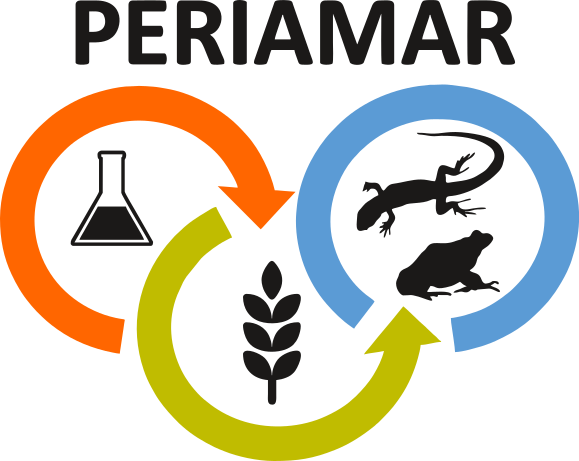Description
The Septicemic/Systemic Cutaneous Ulcerative Disease (SCUD) is a syndrome described in several freshwater turtles: it is observed mostly in chelonians from the family Emydidae (New World Pond turtles, comprising the genera Chrysemys, Emys, Pseudemys and Trachemys) and Trionychidae (Soft-shelled turtles) (Kaplan, 1957; Jacobson E. R., 2007; Ridgley, 2001; Wallach, 1977; Rosenthal, Forbes, Frye, & Lewbart, 2008). The syndrome has been reported in wild and/or captive populations from North America, South America and Europe and it might occur in other parts of the world (similar clinical pictures were observed in freshwater turtles from East Africa and East Asia) (Cooper, 2006; Granados, Moreno, & Brieva, 2013; Lescano, Quevedo, & Fernández, 2013; Lin et al., 2008; Chen et al., 2015). In the first description by Kaplan (1957) the disease was attributed to a single bacterial species, Citrobacter freundii – previously named Escherichia freundii – isolated from cutaneous lesions, heart blood and affected visceral organs. Contagious character of the disease was proved by its transfer to apparently healthy turtles injected with fresh saline suspension of cultivated bacterium (Kaplan, 1957; Granados, Moreno, & Brieva, 2013). Serratia sp., earlier considered by Kaplan only a contaminant agent, was incriminated in the pathogenesis of SCUD by Jackson and Fulton for its lipolityc and proteolytic actions on tissues that allow, in a synergic way, Citrobacter to invade the body from the exposed skin surfaces. The latter bacterium is subsequently able to elicit a systemic/septicemic damage once reached the intestinal lumen (Jackson JR & Fulton, 1970). According to Wallach (1975), the pathogenesis of the disease depends on the presence of Beneckea chitinivora – a common infectious agent of crustaceans – and on the existence of a shell or skin injury which acts as an entryway for the microbe (Wallach, 1975). Nowadays, SCUD is considered a multifactorial syndrome caused by the presence of different Gram negative etiologic agents (see below) concomitant to integumentary system abrasions and/or chronic stressors as suboptimal environmental conditions of temperature or humidity, poor husbandry, poor nutrition (e.g.: predation of infected invertebrates like larvae of Gammarus spp.), overcrowding
135
or unsanitary aquatic habitat (Jacobson E. R., Bacterial diseases of reptiles, 2007; Cooper, 2006; Ridgley, 2001; Hébert & Bulliot, 2016; Rothschild, Schultze, & Pellegrini, 2013). Citrobacter freundii and Serratia spp. (mostly S. anolium or S. odorifera) are frequently and commonly isolated from animals harmed by SCUD, often together with other taxa of Gram negative bacteria (Enterobacteriaceae, Aeromonadaceae or Pseudomonadaceae) as Aereomonas spp. (principally A. hydrofila), Klebsiella oxytoca and Pseudomonas spp. (Cooper, 2006; Jacobson E. R., Bacterial diseases of reptiles, 2007; Ridgley, 2001; Harkewicz, 2002; Köbölkuti et al., 2008; Hébert & Bulliot, 2016; Mitchell & Tully Jr, 2015; McArthur, 2004). Beyond these bacteria, also fungi, viruses and algae can be isolated form clinical lesions and cause possible mixed infections (Szczepaniak & Łojszczyk-Szczepaniak, 2008).
Clinical signs recorded in freshwater turtles affected by SCUD are various and presented in different combinations............
Confinement of freshwater turtle’s cases with abnormal cutaneous conditions to specific lakes could be related to ecological changes occurred in those particular water bodies, therefore having probably a role in the etiopathogenesis of the lesions. This is reasonably presumed because in fishes exposure to sublethal levels of some organic or inorganic substances can suppress nonspecific disease resistance factors and favours the infections of saprophytic or opportunistic organisms (Garner, et al., 1997). There are valid associations between environmental stressors, like inorganic (e.g.: inorganic mercury (Fletcher, 1986)) or organic pollutants (e.g.: pesticides, polynuclear aromatic hydrocarbons or polychlorinated biphenyls (Dunier & Siwicki, 1993)), and disease susceptibility that confirm the induction of immunomodulation and immunotoxicity by these aquatic xenobiotics in fishes and aquatic wildlife populations (Luebke, et al., 1997). Concerning that, Trachemys scripta – and consequently other alien freshwater turtles – might represent an important health risk sentinel correlated to trophic status, availability of oxygen and organic matter, contamination sources and temperature of the water in which it lives (Scaravelli, Zaccaroni, Tosi, Chiusi, & Massi, 2012)............
(From: Hypothesis and Preliminary Retrospective study on SCUD (Systemic/Septicemic Cutaneous Ulcerative Disease) in Invasive Alien Turtles captured in natural environment of Lubelskie region (Poland). In Marini, D. (2017). Invasiveness of allochthonous freshwater turtles: monitoring of paths/positions and sanitary status in Lublin region, Poland. Master Thesis in Veterinary Medicine, Università degli Studi di Teramo (p. 0-176). Teramo, 02.11.2017). The project is funded by National Science Centre Grant No. 2013/11/B/NZ7/01690.
Additional information
|
Chemical
|
Biocides,
Metals and metalloids,
Nutrients and elements
|
|
Taxa
|
Reptilia,
Testudines
|
|
Study Framework
|
Monitoring,
Field or semi-field experiment,
Laboratory experiment
|
Outputs
Pesticides involvment?
Files


